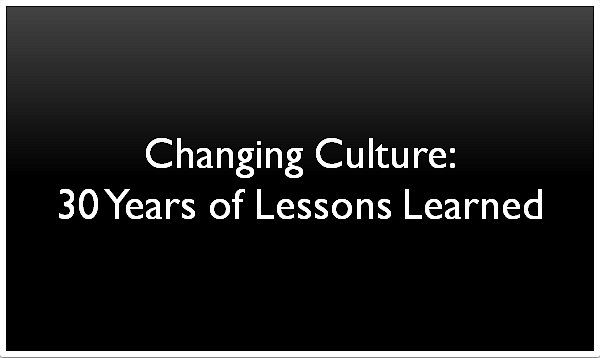
The Problem with Industry Benchmarks
The Problem with Industry Benchmarks
Leaders Are Biased Towards Action
More and more, leaders are under pressure to deliver results with fewer resources. Many, if not most, spend their entire day in meeting upon meeting with little time for thought or reflection. To make matters worse, culture and culture change is complex and not an area of expertise for most leaders. This means that related discussions take time and effort while competing with the myriad of other urgent matters requiring leaders’ attention.
A culture assessment that identifies gaps so decisions can be made in an expeditious manner provides a very appealing alternative. The problem is that, in so doing, leaders make significant assumptions about causality that can lead to wrong decisions and actions that harm, or at best, add no value. For this reason alone, leaders are better served to avoid comparisons to industry benchmarks and focus on culture alignment to strategy with the objective of competitive differentiation.
Organizational Cultures aren’t ‘Good’ or ‘Bad’
Cultures aren’t ‘good or bad’, contrary to what is inferred by industry benchmarks. They serve a purpose and ‘stick’ because they make sense and have helped the organization succeed. Cultures reflect the shared values, beliefs and assumptions of members regarding the correct and best way to do things in order to achieve an organization’s goals and fulfill its purpose.
The problem is that nothing stays the same. Changes in the internal and external environment require new and different strategies and ways of working that challenge existing belief systems. To remain competitive and produce results, an organization and its culture may need to change. This doesn’t mean the current culture is “bad”; it just needs to be different in some, specific ways. As a matter of fact, best practice studies indicate that building on existing culture strengths while at the same time questioning assumptions is the most effective approach to achieving sustained change.
Culture is Complex and Nuanced
Culture is complex with tonalities and nuances that make every organization wonderfully unique. At a macro level of measurable culture attributes, an organization may appear to be similar to others and yet be very different in terms of the lived experience.
It can also have characteristics in common with others in its industry yet differ on several attributes and in subtle ways that are critical to its identity and success. This is one reason why benchmarks, while informative, can be dangerous.
As a statistical measurement tool, they do not capture the subtleties of culture, the dynamic interplay between different aspects of culture and other elements of the organization system, or identify underlying beliefs and assumptions that are the foundation of culture.
If you have any questions about creating a winning culture, contact us at Culture-Strategy Fit. We will discuss this topic further in the next post.









